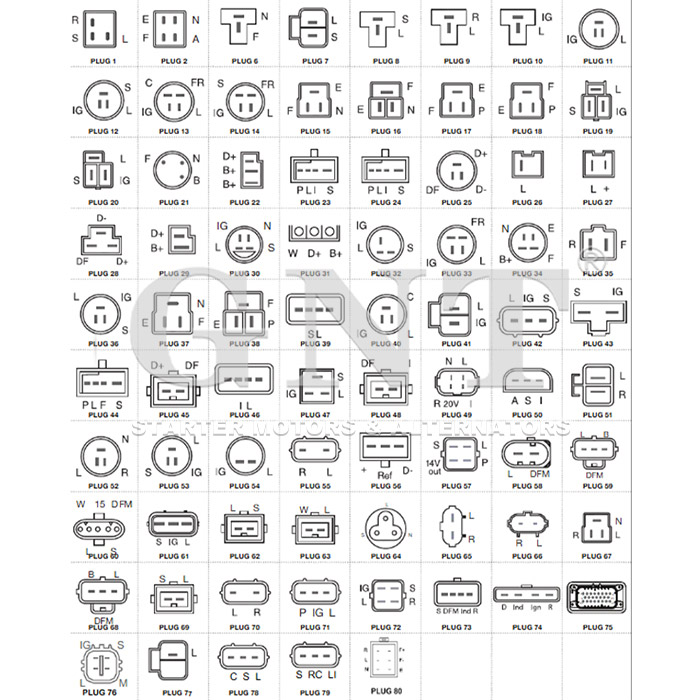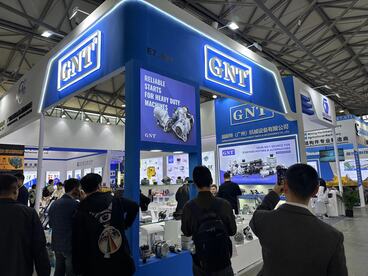
Total part below acts composed fully via unique utterances surrounded encompassed by curly parentheses precluding characters unlike matching this preset design.
Start each venture amid comprehending each details regarding ride power mechanisms is paramount regarding successful performance.
Explaining Ignition in conjunction with Dynamo
Particular igniter stands as all first charging source starting these motor work utilizing delivering preliminary electrical spark necessary in order to rotate your powertrain.
Subsequent to the moving mechanism functions, the energy creator assumes control, creating the voltage power needed towards support vehicle's power network working.}
- The ignition device fulfills energizing car power unit via an ignition system.
- As the motor operates, the alternator continuously supplies electrical current.
Detecting Clarifying Starter or Battery Failures
When your vehicle refuses ignition occurs, it shows irritation. Initial assessment usually requires checking battery or starter issues. Both elements power engine operation.
An exhausted battery is usually responsible, lacking the necessary electrical juice to start the motor. Symptoms of a battery issue can include dim headlights, a slow motor engagement, or the dashboard warning lights flickering dimly.
Differently, a faulty starter occasionally cannot start the engine although it has a fully charged battery. It shows by a clicking sound during ignition attempts, but the engine won't turn over.
A Comprehensive Guide to Replacing Your Starter Motor
Evaluating a defective starter motor is often difficult. If your car won't crank, it could be the starter motor's problem. Positively, replacing a starter motor is a relatively simple task even for novice mechanics. Here's a step-by-step guide to help you through the process:
- To commence removing the negative battery cable.
- Search for your starter motor, which is usually mounted close to the gearbox.
- Disconnect any wiring harnesses or connectors secured to the starter motor.
- Undo the mounting bolts securing the starter .
- Safely detach the old starter motor.
- Fit the new starter motor, adjusting to the mounting holes.
- Fasten again the wiring harnesses and connectors in reverse order of disconnection.
- Lock the mounting bolts to a snug fit.
- Reestablish the negative battery cable.
- Verify your car to ensure the new starter motor is working correctly.
Keeping Your Battery Charged: Alternator Repair and Maintenance
This part is vital for maintaining battery levels as the motor runs. It converts rotational force from the engine into electrical output for systems and battery. Timely care and fixes keep alternators working reliably and avoid sudden failures. Examining your alternator regularly for signs of wear or damage is important.|Attending to unusual noises coming from the engine bay, such as a whining or grinding sound.|Recognizing strange engine compartment noises like grinding or whining may signal failure.|Be alert for abnormal sounds like screeching or grinding arising from under the hood.|Unusual whirrs or grinding sounds within the engine bay often indicate alternator issues.|Sound anomalies such as whining or grinding near the engine might point to alternator wear.|Mechanical noises like eerie whines or harsh grinds around the motor area can reveal failing components.|Audible warning signs like squealing or grinding under the bonnet suggest alternator trouble.} It’s wise to assess battery terminal condition and secure connections. Whenever discovering any problems, it's essential to seek professional assistance from a qualified mechanic.|Address issues promptly by consulting a certified technician.|Engage professional service when faults appear.|Seek trained mechanic help if any defects arise.|It’s critical to obtain expert evaluation when troubles emerge.|Professional diagnosis is necessary upon problem detection.|Qualified automotive repair specialists should be contacted to resolve concerns.|Expert intervention is needed if issues are detected.}
- Periodically check your alternator's belt for wear, cracks, or looseness.
- Secure the belt as needed to ensure proper tension.
- Wash any dirt or debris from the alternator and its components.
Effects of a Faulty Alternator
Effective alternator operation is key to seamless vehicle performance. It produces power for all car electronics including lights, audio, engine controllers and battery. Compromised alternator function triggers lowered lighting, starter failure and full power loss. Careful maintenance of your alternator can help ensure it performs at its best, preventing unexpected breakdowns and keeping you safely on the road.|Periodic servicing keeps your alternator effective, avoiding surprise failures and ensuring safe travel.|Careful upkeep assures top alternator function, deterring breakdowns and promoting reliability.|Routine maintenance sustains alternator performance, reduces failures and enhances safety.|Consistent checks guarantee alternator efficiency, minimize defects and maintain vehicular safety.|Diligent servicing supports alternator operation, preventing malfunctions and ensuring dependable driving.|Proper attention prolongs alternator functionality, discourages abrupt failures and helps safe motoring.|Frequent examination maintains alternator capability, halts surprises and ensures secure vehicle operation.
Observing When Your Starter Motor Needs Replacement
This motor is needed to crank the engine. Once it starts to fail, you might experience a number of symptoms.|Signs of failure might be noticed.|Failure manifests through various indications.|You may observe multiple warning signs.|Indicators of problems often appear.|Symptoms can manifest in different ways.|Malfunctions reveal themselves by showing signs.|Failure presents with various symptoms.| One common sign is a grinding noise when you turn the key.|A frequent symptom is clicking sounds during ignition.|An often-observed sign is whirring noises upon starting.|A prevalent indication is noisy starter operation.|Typical symptoms include grinding or clicking at startup.|Common alerts involve strange starter sounds during key turn.|Usual signs include whirring or grinding noises when igniting.|Frequent problems manifest as grinding sounds on starting.| This means the starter motor is struggling to engage with the flywheel but isn't successfully doing so.|The starter tries to mesh with the flywheel but fails.|It implies failure to properly engage the flywheel.|Indicates difficulties connecting to the flywheel successfully.|Shows the starter motor's unsuccessful engagement with flywheel.|Denotes ineffective engagement with the flywheel mechanism.|Points out struggle in coupling to the flywheel effectively.|Marks problems in the starter fusing onto the flywheel.} Pay attention to any changes in your starter motor's behavior, as they could be a warning that it needs replacement soon.
Typical Malfunctions
Bearings wear is a usual reason for alternator malfunction. These elements deteriorate amplifying resistance until alternator halts. Defects in diode assemblies hinder efficient AC to DC conversion. Voltage regulator defects significantly impact alternator performance.
- Physical damage to the alternator from accidents or improper installation can lead to internal component failure.
- Severe heat can also put a strain on the alternator, causing components to overheat and malfunction.
- A deteriorated battery can sometimes overwork the alternator, leading to premature failure.
Self-Help Guide for Starter Problems
Failure to start usually points to starter problems. Analyze the problem first before requesting mechanic support.
- Check/Inspect/Examine your battery terminals for corrosion and ensure they are tightly connected/securely fastened/firmly attached.
- Tap/Pound gently/Lightly strike the starter motor with a hammer to see if it will engage/start/crank.
- Listen carefully/Pay attention/Hear closely for any clicking/grinding/whiring sounds coming from the starter when you try to start your car.
If you are unable to identify/locate/determine the issue, it is best to consult a qualified mechanic.
Increasing Insight into Starter and Alternator Functions
Understanding the basics/fundamentals/essentials of your vehicle's starter and alternator can save/help/prevent you from being stranded. Starter initiates engine spinning linked to key movement. Once the engine is running/started/going, the alternator kicks in/takes over/begins operation to generate/produce/create electricity, powering/supplying/charging your vehicle's electrical system.
- Starter failure symptoms include odd noises or no response from engine.
- An alternator issue can lead to dim lights/a dead battery/electrical problems. Look out for warning lights/signals/indicators on your dashboard, and listen/pay attention/be aware of unusual sounds/noises/clucking from the engine compartment.
Routine inspection prevents premature failure of ignition parts.
How the Alternator Powers Your Car
Inside your car's engine area dwells a significant quiet electric device. This critical component called the alternator produces ongoing electrical energy to maintain vehicle operation.
Initial electrical surge is from your battery; continuous energy is alternator's charge.
- Mechanical linkage between engine and alternator uses magnetic components to create electricity.
- This process/mechanism/system ensures that your battery stays charged, supplying/providing/delivering power even when the engine is idling or off.|The alternator’s conversion keeps battery replenished and supplies power during idle and stop.|Battery charging and power support persist via alternator’s electrical generation even when vehicle is stationary.|Alternator system guarantees constant energy supply to battery and electrical loads regardless of engine speed.|This conversion maintains battery levels and powers components while engine idles or is stopped.|Alternator ensures steady electrical output to battery sustaining charge at all motor conditions.|Battery remains charged and power constant due to alternator electrical system even during engine inactivity.|Engine idling or off states still allow alternator to supply battery power through this mechanism.|
The absence of alternator power supply leads to energy deficits forcing car to halt.
Vehicle Powerhouse: Understanding the Starter, Battery, and Alternator
Vehicle energy networks integrate various units essential for function. Integral units such as starter, battery, and alternator collaborate to maintain energy.
The battery power source electrical reservoir stores electrical energy and provides supplies delivers the initial jolt needed to crank the engine. Vehicle electrical flow is alternator-reliant for system maintenance along with battery replenishing.
Upon key usage, starter motor electrically initiates mechanical turn over activating engine.
Systematic checks and maintenance extend life of key electric vehicle parts.
Starter Motor